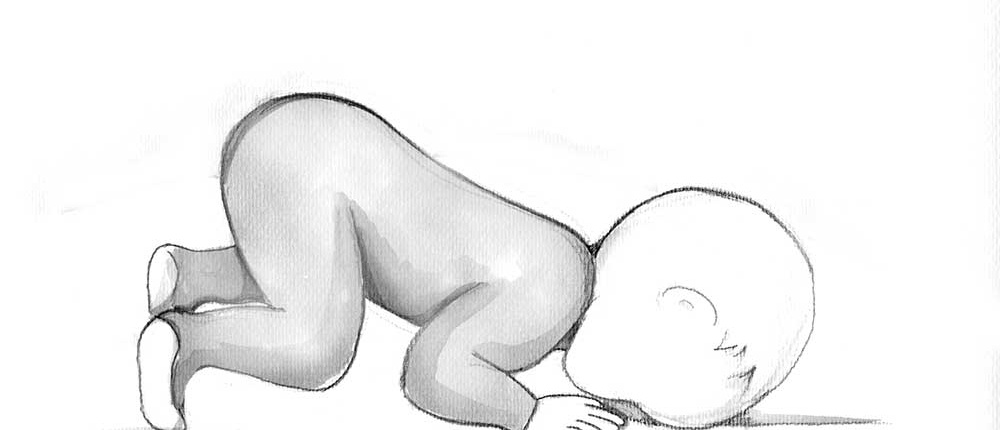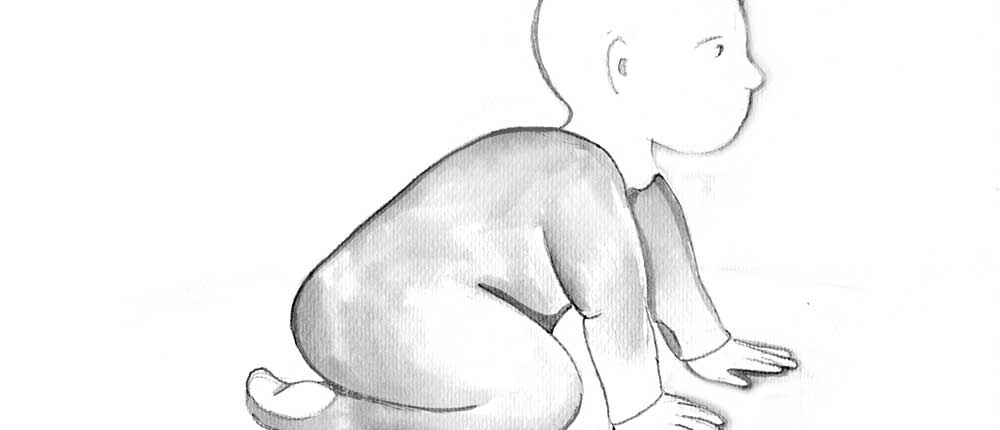Symmetrical Tonic Neck Reflex (STNR)
The STNR is activated in two positions, namely in flexion and extension. When the head is flexed, the arms are also flexed and the legs are extended. When the head is extended, the arms are extended and the legs are flexed. The head movement triggers the reflex pattern.
Explanations Symmetrical Tonic Neck Reflex (STNR)
In this movement, the child repeatedly returns to a resting position in order to activate two sensory processes: binocular vision and hearing. The reflex can also be triggered in a quadrupedal position. The STNR facilitates the transition from a static position to crawling with cross-body movements. Through crawling, both halves of the brain work together synchronously. The STNR replaces the ATNR. As visual abilities develop, the reflex is integrated so that directed independent movements can occur. While the ATNR limits visual abilities to arm’s length, the STNR trains distance vision. Spatial perception and three-dimensional vision and hearing, as well as time perception, are established. 75% of children with dyslexia or learning disabilities show an active STNR. If the reflex is still latently present after the 10th month, all flexor muscles of the pelvis, hip, and legs involuntarily go into hypertonus during neck extension, leaving the child at its mercy. In the upper body, all extensor muscles of the face, arms, and neck are hypertonic. With neck flexion, it is the exact opposite.
If the reflex is not fully integrated, the following abnormalities may occur:
- The child did not crawl.
- It sits on the floor in the W-sitting position.
- A characteristic writing posture is the following: The head leans forward and the legs wrap around the chair legs.
- Poor eye-hand coordination is present.
- When swimming, the legs sink away downwards.
- Close and distant adjustment of the eyes when writing and playing ball is insufficient.
- Characteristic head postures are the following:The head goes down, the gaze goes from the bottom to the top, thus looking suspiciously, the front neck muscles are shortened and the back ones are lengthened;
- Or: The head goes into the neck, tension builds up in the neck and the facial expression becomes snooty.
- Both head positions negatively influence perception and memory.
Emergence: 18th week intrauterine, mature after birth.
Duration: Active from 6 months
Integration: In the 10th month
More interesting knowledge…
… about early childhood reflexes, as well as concrete exercises for subsequent integration and centering can be found in my course BalanceHIRO®.



